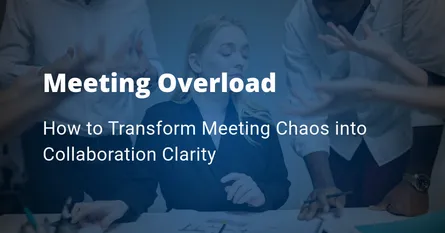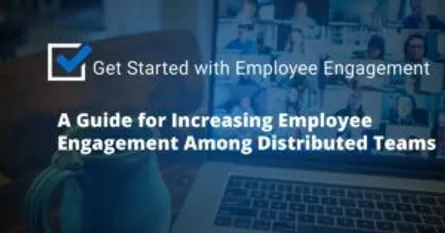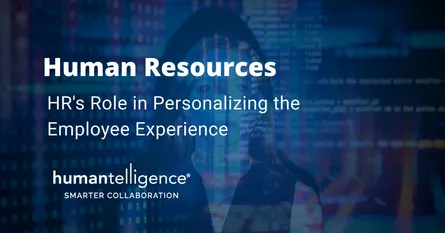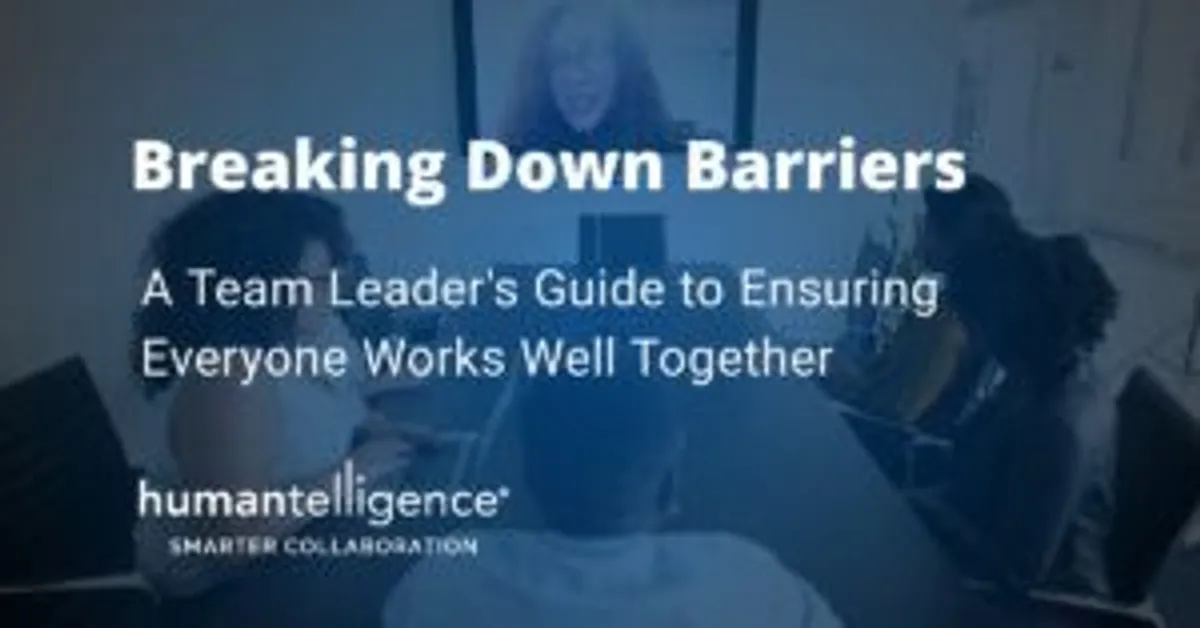
Breaking Down Barriers: A Team Leader's Guide to Ensuring Everyone Works Well Together
- Admin
- Collaboration
- 10 Oct, 2023

The challenges of managing distributed teams are real, but so are the benefits. When done right, managing distributed teams can lead to better collaboration, higher productivity, and improved work-life balance for team members. However, there are a few challenges team leaders often encounter when managing distributed teams, including inevitable team friction and personality differences, issues with collaboration, and not meeting goals. With the right tools and strategies in place, you can break down the barriers preventing your team from reaching its goals. So, if you’re a manager of distributed teams, read on for strategies on how to manage distributed teams more effectively.
The Rise of Distributed Teams
According to a 2020 study by Buffer, 52% of companies had at least one remote employee. This number has obviously grown, as more and more companies realize the benefits of having a distributed workforce.
- To save money on office space.
- To attract and retain top talent.
- To increase employee productivity.
- To improve work-life balance.
- To be more environmentally sustainable.
There are also a number of challenges associated with managing a distributed team. Some of the most common challenges include:
- Cultural and personality differences
- Communication and collaboration
- Lack of connection
- Trust and accountability
However, the benefits of having a distributed team often outweigh the challenges. Companies that are successful in managing a distributed team can reap a number of rewards, including:
- Increased productivity
- Reduced costs
- Improved employee satisfaction
- Increased innovation
- A more globalized workforce
If you’re considering managing a distributed team, it’s important to carefully consider the pros and cons. With careful planning and execution, a distributed team can be a powerful tool for driving business success.
- A study by Global Workplace Analytics found that the number of people working remotely in the United States has increased by 44% since 2010.
- A study by Upwork found that 57% of freelancers work remotely.
- A study by FlexJobs found that 71% of companies offer remote work options.
- A study by Buffer found that 52% of companies have at least one remote employee.
- A study by PwC found that 83% of CEOs believe that remote work will be the norm in the future.
As you can see, the trend toward distributed teams is only going to continue. If you’re not already thinking about how to manage a distributed team, now is the time to start and to get ahead of some of the key challenges that often hinder distributed teams.
Problem 1: Managing Different Personalities
It’s no great secret that everyone works in different ways and that diverse working styles or work energizers can often clash and lead to conflict. Nothing hurts productivity and growth like a team that doesn’t know how to work together. All employees have different styles of working that draw on their strengths and weaknesses. And these different styles or work energizers make up a team culture. For teams to work together effectively, they should be aware of each other’s ways of working, and leaders need to be able to manage different work styles to their advantage.
A well-balanced team that draws on the strength of each member’s work styles can lead to increased productivity, innovation, and efficiency in the workplace. Not doing so can translate into lost time and productivity, workplace stress, financial costs, and employee departure.
The right balance of work styles within distributed teams
As team leaders, we must understand and manage a variety of work styles every day to be effective. So let’s start with a quick little assessment. This test might sound a bit like you are at the eye doctor, but I promise it will be painless. Simply pick Option 1 or Option 2 for each of the following questions:
- When it comes to solving problems, do you tend to be more (1) Deliberate or (2) Decisive?
- When it comes to relating to people, do you tend to be more (1) Reflective or (2) Outgoing?
- When it comes to your work pace or level of urgency, do you tend to be more (1) Steady or (2) Spontaneous?
- When it comes to processes and procedures, do you tend to be more (1) Cautious or (2) Freeform?
Now count up your ONEs and TWOs. If you ended up with 3 or 4 ONEs, your overall work style is oriented toward stability. If you ended up with 3 or 4 TWOs, your overall work style is oriented toward change. If you ended up with 2 ONEs and 2 TWOs, you bring a balance between stability and change orientation.
On any given team and depending on size, you may want at least two different types of work styles present. There’s a popular decision-making practice where employees assume different thinking hats. For example, one employee may be tasked with coming up with new ideas. They’re encouraged to bring unpredictable or possibly outlandish ideas to a meeting. Another employee is then tasked with being more discerning. They ask questions and assess the risks of different ideas.
By assigning team members a specific hat, at different times, for different projects it opens up for more inclusive discussions where a variety of ideas and perspectives can have a seat at the table. It’s a great way to bust dreaded group-think that often stifles innovation. This approach shows that every work style is a strength when expressed in the right situations.
So let’s walk through some key tips to keep in mind when managing people and teams with a mix of work styles.
How to manage different work styles
Set a clear vision for the team.
Managing challenging behaviors – such as steamrolling or overanalyzing – takes planning and communication on your part. It’s important to play to your people’s strengths and direct their energy toward common goals.
The tone of your workplace has a lot to do with setting expectations – and that’s your job. When beginning a project, gather the right team members together to talk about objectives and goals. How does the project support the company’s values and vision? How does each person’s role support the goals? Everyone should be on the same page, working toward the same outcome.
How the team arrives at the final goal may look different to each person because of their individual work style or energizer. So, it’s up to you to focus or redirect their strengths, make sure they understand their roles, give feedback along the way, and give them the support or independence they need to do great things.
Be aware of your own work style as the team leader.
As leaders, we set the tone for our team. Every one of our team members can probably rattle off our behavioral traits without hesitation. When we are aware of our own tendencies and preferences, we have more opportunity to observe our own blind spots and change course when necessary. Not sure what your own behavior tendencies, motivators, and work energizers are? Use an assessment like this.
Harness the power of diversity of thought and inclusion.
When a team can see and understand how each person brings unique work-style strengths to the team, their capacity for better collaboration increases. Measure your team’s unique culture and determine the shared strengths of the team, as well as each individual team member. Talk about how different work styles have benefited the team.
Be intentional with your team meetings.
Put your knowledge of each team member’s work styles to use during team meetings. Ensure you actively bring in your more reflective team members, as they may not readily volunteer what they are thinking. Tap into people who are wired for a specific topic. For instance, ask your freeform team members to come prepared with some new ideas. Leading team meetings with intention makes the meeting outcome more productive, and it allows you to draw on different team members’ strengths.
It’s also important to meet people where they are. So, when you’re working with someone who relies on facts to make decisions, you should provide information that supports why something needs to be done. And you should expect that person will do her own research to verify your information. It’s simply how she works.
However, to adapt your management style to meet a real go-getter, you’ll want to be very direct with this team member. Tell him where he stands, what needs to be done, then get out of his way and let him do it. He’s all about getting it done. This team member will appreciate knowing where he stands with you. On the other hand, when you have a very social person on your team, you can expect to spend the first 5-10 minutes talking about family, current events, or other happenings before getting down to business.
Meeting each employee where they are when you interact with them in meetings will go a long way toward fostering the trust you need to execute on the vision you have set.
Problem 2: Communication & Collaboration Breakdowns in Distributed Teams
Distributed teams need intentional communication because they lack the face-to-face interactions that are common in co-located teams. This can lead to misunderstandings, missed deadlines, and a lack of cohesion. In fact, research has shown that distributed workers waste upwards of 17 hours wasted each week on issues related to miscommunication.
There are a number of things that distributed teams can do to improve their communication. First, they should establish clear communication channels and protocols. This means agreeing on which tools will be used for communication, how often team members will check in, and what the expectations are for response times. Second, they should be mindful of the tone of their communication. When you can’t see someone’s facial expressions or body language, it’s easy to misinterpret their tone. Be sure to use clear and concise language, and if you want to be safe, avoid using sarcasm or humor that could be easily misinterpreted.
Here are some additional manager’s tips for intentional communication in distributed teams:
- Demonstrate empathy any time the team member expresses a problem or frustration.
Use The Empathy Formula to acknowledge the team member’s feelings based on facts. Here’s the formula: “It sounds like you’re (feeling) because/about (fact).” Here’s a real-life example: “It sounds like you’re feeling overwhelmed (feeling) because of the reduced number of people on the team (fact).”
- Establish a new one-on-one meeting routine.
Have a scheduled meeting at least twice per week over video conference. If these meetings are currently less frequent, use the same amount of overall time divided up over more meetings. Always have your camera on and ask that the employee does the same — it’s a way to build connection and drive resonance.
- Talk to your team members every single day.
If a meeting is not scheduled, call them on the phone and talk to them. Sometimes just a quick check-in call is all it takes for some days. One of the most important elements of being an effective manager is keeping lines of communication open with your team members, especially when it has nothing to do with assignments or project statuses.
Do note that talking to a team member in a team meeting doesn’t count here, nor does exchanging texts or leaving voicemails. We have to put in the work!
- Demonstrate your availability.
End your meetings with your team member by encouraging the team member to contact you by phone or to request an unscheduled meeting. Always answer the call when possible.
- Establish line of sight and continue to reinforce it.
Ensure work assignments, expectations, and deadlines are perfectly clear. Break down current goals into smaller chunks that are measured on a more frequent basis. Find opportunities during your one-on-ones to talk about how the specific work they do contributes to a specific team or company objective. This is not as obvious to them as it might be to you.
- Do not hold hybrid meetings.
Being a good manager entails leveling the meeting playing field so all team members can contribute equally. This is a best practice in general, and particularly important for any struggling team members. If some of the team members are in the same location and some are remote, have the onsite team members split up and join from their own computers. It equals the playing field, and makes remote employees feel less on the outside.
- Leverage a Culture Playbook
Use Humantelligence at least once a week with your teams. The first step is deepening your understanding of the team member’s motivators and behavioral preferences to best know how to help them. Once you have a deeper understanding of his/her psychometric-based Talent Profile, use the one-on-one comparison tool to go over your and the team member’s similarities and differences, which will help the team member feel “seen.” Uncover how the team member’s unique strengths shown on their Talent Profile can be better put to work for the benefit of the team, and then tell them.
From here, you can then leverage the team culture playbook. Being a good manager entails taking stock of your team’s dynamics, monitoring it, seeking feedback on it, and then shifting, building, or sustaining it. The Playbook enables you to align culture to strategy so you can improve your team’s performance. It’s a simple three-step process to help guide you through driving better collaboration, inclusion, and team effectiveness more quickly. With ongoing and frequent assessment of your team’s culture, you’ll be well on your way to better engaging team members and ensuring optimal effectiveness.
Problem 3: Lack of Meaningful Connection within Distributed Teams
Connection at work matters. Would you be surprised to learn that people with friendly connections at work perform better in their job? According to research, people who have a good friend at work are not only more likely to be happier and healthier, but they are also seven times as likely to be engaged in their job. In addition, employees who report having friends at work have higher levels of productivity, retention and job satisfaction than those who don’t.
The feelings of belonging and purpose that friendship and connection foster are among the top benefits people are looking to get from their work. These feelings are so profound and powerful that some employees would even trade some compensation for more meaningful relationships – at least that’s what over half of the employees surveyed by BetterUp Labs found. And when connection improves, collaboration and productivity has shown to improve by nearly 25%.
How to encourage meaningful connection among your distributed team
A recent study from Accenture found that on-site workers were the most likely to say they felt disconnected at work. The study challenges the assumption that working only on-site makes people feel more connected. People who work on-site, in comparison with those who work in hybrid or remote workplaces, feel the least connected of the three groups studied — 42 percent of on-site workers say they feel “not connected” versus 36 percent hybrid and 22 percent fully remote.
While in-person time is vital, physical proximity that lacks leadership support, flexibility, technology or sense of purpose doesn’t necessarily translate into people feeling deeper connections to their work and to each other. It’s not about the building, the site, the campus. As with most things in this life, it’s about what’s going on inside that counts.
Accenture’s Organizational culture: From always connected to omni-connected report outlines how companies can strengthen culture and connection by delivering what they refer to as “omni-connected experiences,” which level the playing field, enabling people to participate fully and have an equitable experience — growing their careers, building relationships, and creating both personal and business value and impact — regardless of where they physically work.
The key to deeper connection and strong engagement is to simply enable and activate the everyday interactions between coworkers.
- Make sure your employees are making the most of their in-office days and that there are adequate spaces and reasons for in-person interactions.
- Encourage spontaneous check-ins. With fewer people around us, it’s easy just to immerse ourselves in work, but regular check-ins with others are crucial for everyone, in particular leaders who may not otherwise notice if their team is struggling.
- Make sure your remote employees aren’t being overlooked for team and company events. Be mindful to create opportunities for genuine human connection.
- Support informal mentorships. Facilitate communication across departments and employees of different ages and experience levels so team members can learn more about each other and their areas of work, while sparking new ideas and interests.
Embracing Collaboration Technology that Drives Connection
For any work arrangement, whether in-office, hybrid, or remote, keeping your employees connected through technology is a must. Beyond using email, Slack, Teams, Zoom, or other collaboration software, consider squeezing more from your investment in those tools by integrating a quick add-on that gives each team member the insights needed to establish stronger relationships with another – all before they even start communicating.
When drafting an email, chatting with a colleague, or joining a meeting, this add-on automatically surfaces useful, customized tips for more effective communication that ends up helping you improve your relationships at work.
Consider the use case of one-on-one check-ins. One of the most powerful and simple steps a manager can take to help an employee feel more connected and productive is to check in with the employee regularly. Learning how to check-in effectively means inviting the conversations that really matter with the employee and providing the support and encouragement they need. Now, add in a layer of knowing how best to approach that employee based on their communication, collaboration, and work styles, and your one-on-ones will be more productive than ever – and your employee will feel more seen and connected than ever. It’s a game changer for managers.
Human connection builds and compounds when people have ongoing shared experiences and a mutual familiarity with one another. Anytime you create time and space for that – and enable it with technology – you’re creating just the right conditions for connection to blossom. If you’re looking to improve your team’s connection, collaboration and productivity, we can help.
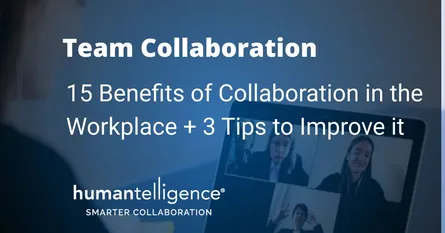
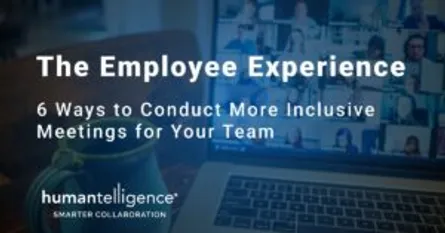
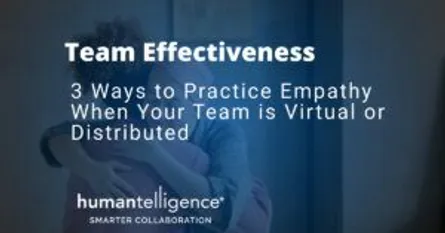



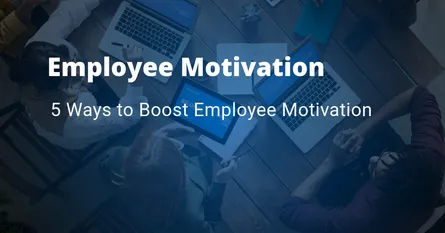



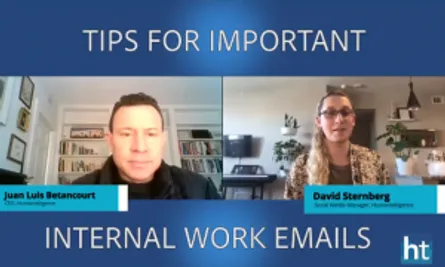

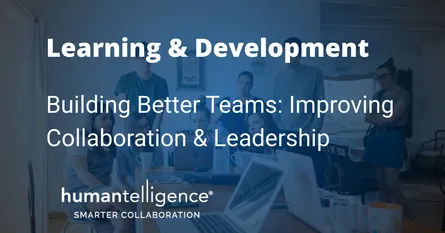

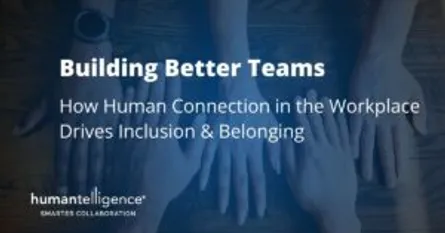

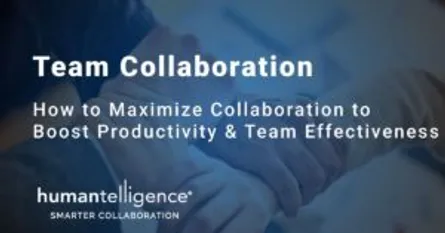



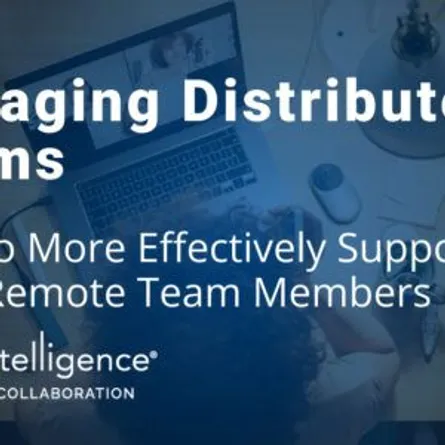
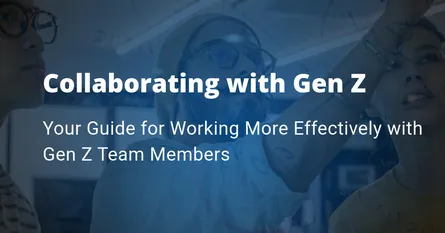
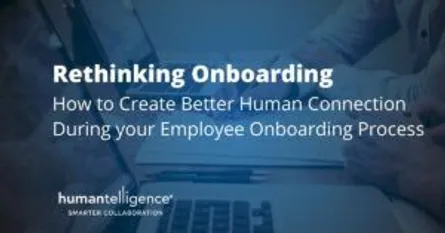


-Low-Quality.DNBpXyLx_1VXSiM.webp)
.CiqwvMOO_A63sY.webp)
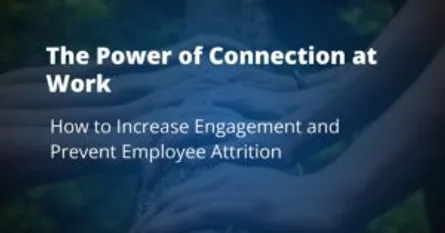
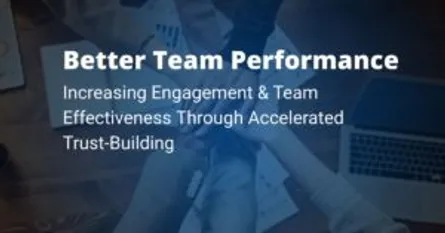
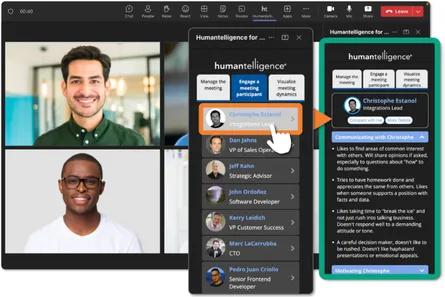

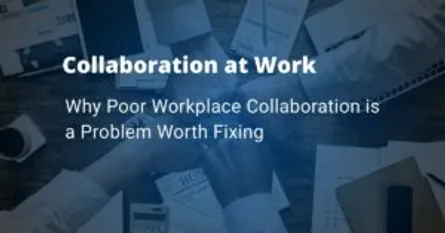
-Medium-Quality.ZFp5mEuF_Z13ebXJ.webp)
